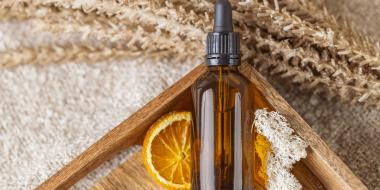*This is the second in a series of three posts on the most toxic cosmetic ingredients and how to easily recognize them.
In Part 1 of this series, the first 4 of the top 12 toxic cosmetic ingredients in products were reviewed. I commend you for taking the time to learn ways to reduce your exposure to these chemicals and seek alternatives, as they can have a significant impact on you and your children’s health. With exposure to toxins, every little bit helps, so congratulations on taking this very important step. Here are the next 4 toxic cosmetic ingredients to look out for.
Formaldehyde-releasing preservatives
These toxic cosmetic ingredients may seem challenging to remember by name, but the top ones to look out for are:
- DMDM hydantoin
- diazolidinyl urea
- imidazolidinyl urea
- methenamine
- quaternium-15
- sodium hydroxymethylglycinate
The purpose of these ingredients is to slowly release formaldehyde into the product to act as a preservative. Formaldehyde is a known human carcinogen. The best way to avoid exposure to formaldehyde is to choose 100% toxin-free products.
Parabens
Parabens are the most widely-used preservative in cosmetics. Look for:
- methylparaben
- butylparaben
- benzylparaben
- ethylparaben
- isobutylparaben
- propylparaben
Parabens are difficult to avoid in conventional skincare products. Parabens, like phthalates, are commonly hidden in products under the umbrella term of “fragrance”. Parabens are easily absorbed through the skin and have an affinity for fatty tissues such as the breast. They also have the ability to mimic estrogen in the body and are classified as a hormone disruptor. Parabens are particularly harmful for babies because they are stored in the fat cells and are constantly released into the bloodstream as they grow. High exposure to parabens has also been linked to increased rates of obesity in children.
Fragrance (Parfum)
Fragrances are a complex mixture of chemicals and as they are a “secret recipe” of the company, they do not have to be disclosed to the consumer. It is a sneaky way to include parabens and phthalates in products. Fragrances are part of a variety of different personal care products from lotion, to hairspray, to deodorant. One trick of the industry to note is just because something is labeled as “fragrance-free” does not mean that it does not contain fragrance; it could still be there in smaller amounts to mask the smell of the other chemicals in the product, meaning that product likely also contains both parabens and phthalates. The easiest way to avoid these toxins is to choose toxin-free, unscented products from a brand that you’ve researched and trust.
Glycol
These are petroleum-based compounds that help to make creams thicker, and increase the ability to moisturize. Polyethylene glycol is problematic because it is frequently contaminated with 1,4-dioxane. Dioxane is a possible human carcinogen and it easily penetrates the skin. Another glycol to be aware of is propylene glycol. This is a chemical that increases penetration of the product into the skin. When coupled with dangerous chemicals, this increases the chances that the chemicals will be absorbed into the body.
While all of this information may seem a bit alarming and overwhelming, given how frequently skincare products are used, it’s very important to know what ingredients to avoid, and to know there are better choices.
Hopefully these tips make your shopping trips easier, and you read on for Part 3, the final post of our 12 Toxic Cosmetic Ingredients series!
*Originally published on June 18, 2016






